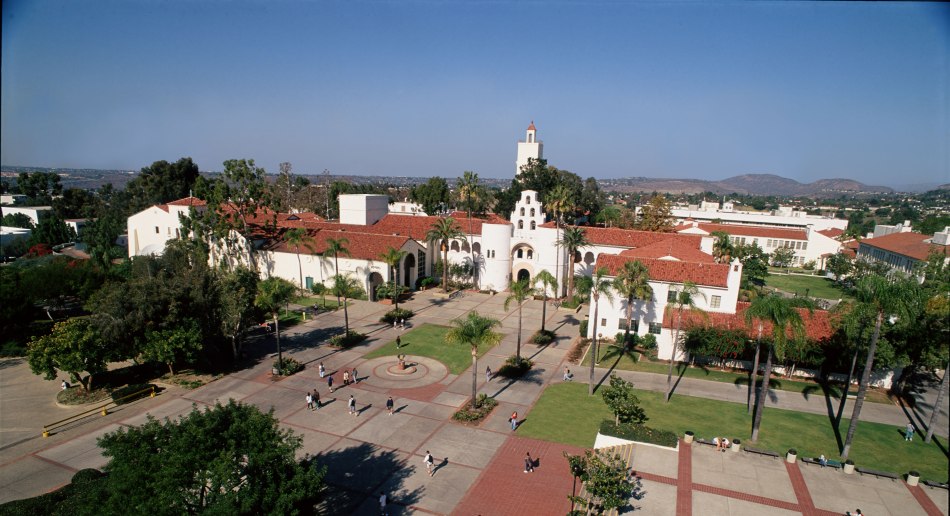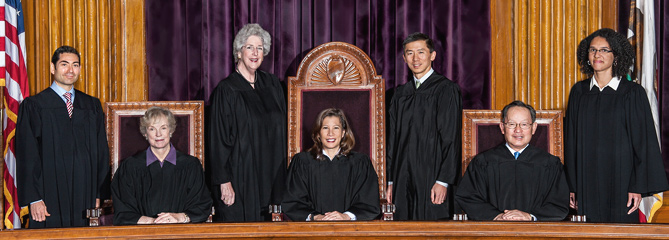CA Supreme Court Rejects California State University’s CEQA Dodge–Again
Justices Hold CSU Can’t Pass the Buck re: Environmental Mitigation Measures Tied to Campus Expansion

In an important decision issued last week, the California Supreme Court forcefully rejected the California State University’s efforts to avoid paying for mitigation measures needed to offset the adverse environmental impacts associated with CSU’s ambitious expansion plans. That’s welcome if predictable news from a court that has in recent years been protective of the state’s bedrock environmental protection law, the California Environmental Quality Act (CEQA).
California State University (CSU) is the nation’s largest four-year public university, with a current student enrollment of 460,000 students on 23 campuses across the state. Recently, the CSU Board of Trustees announced plans to increase statewide student enrollment by 107,000, and budgeted $9.9 billion for the necessary expansion.
The specific focus of City of San Diego v. Board of Trustees of the California State University was CSU’s plans to expand its San Diego State campus by some 11,400 additional students over the next seven years. (CSU San Diego, a.k.a. “San Diego State,” is one of the system’s largest campuses, with a current enrollment of 33,000 students on its 280-acre campus.) That expansion contemplates a number of new buildings and related on-campus improvements at San Diego State to accommodate the projected growth.
CSU prepared an environmental impact report (EIR) for the San Diego State campus expansion, as is required under CEQA for all such major state and local government projects. Its EIR concluded that the proposed campus expansion project would unavoidably generate significant new traffic congestion in the surrounding community, and quantified the projected costs of mitigating those off-site impacts at $15 million.
So far, so good.
But CEQA requires not only that unavoidable adverse environmental impacts associated with a proposed project be identified in an EIR, but that they be mitigated by the project sponsor to the maximum extent feasible. (It’s this latter feature of CEQA that distinguishes it from the federal law on which it was roughly patterned–the National Environmental Policy Act–and that makes CEQA the most powerful environmental assessment law in the country.)
And that’s where CSU’s ambitious plans to expand its San Diego State campus foundered. Even though the CSU had budgeted the necessary funding for the campus expansion from a combination of taxpayer dollars, student fees and other sources, it refused to commit the $15 million required to mitigate the documented off-site traffic impacts of that expansion. CSU claimed it was legally unauthorized to pay for the necessary mitigation unless and until the California Legislature appropriated the necessary funding for that explicit purpose. Since the Legislature had made no such specific appropriation, CSU declared that the otherwise required, off-campus mitigation was infeasible, and approved the project without funding the off-site mitigation.
That decision understandably drew the ire of the City of San Diego, the San Diego Association of Governments and local transportation officials. They recognized that the effect of CSU’s CEQA decision would be to pass off to them the costs of dealing with off-site impacts from the San Diego State campus expansion. They sued CSU, claiming the Board of Trustees’ refusal to pay for the costs of mitigating those off-site impacts violated CEQA.
In a unanimous decision, the California Supreme Court agreed with the local governments, ruling that CSU’s efforts to evade paying for the mitigation measures its own EIR had found necessary violated CEQA. Writing for the Court, Justice Kathryn Werdegar rejected CSU’s argument that an earmarked appropriation from the Legislature is a condition precedent to the University’s obligation to mitigate the identified, adverse environmental impacts of its project.

The justices cited multiple reasons supporting their decision. Three of those cited reasons seem key: first, the Court noted that almost all of the funding for CSU’s on-campus improvements “are to be financed with non appropriated funds”–i.e., funding from sources other than the California Legislature. Second, the justices observed that both the University of California and the California Community Colleges–unlike CSU–do not rely on earmarked appropriations for off-campus environmental mitigation required for their on-campus projects under CEQA; instead, both systems direct funding from within their own budgets–including non-state funds–“to compensate local agencies for off-campus infrastructure improvements.” Finally, the Court noted that if it accepted CSU’s arguments, the affected local governments would be faced with a major fiscal burden in mitigating the adverse environmental effects associated with CSU’s on-campus projects, since both constitutional law principles and California’s Mitigation Fee Act prevent those local governments from recovering those costs from third party developers.
The Supreme Court’s decision in City of San Diego v. Board of Trustees of California State University is both welcome and predictable. By contrast, it’s disturbing that this litigation arose at all, given CSU’s efforts to shirk its CEQA obligations a decade earlier in another Supreme Court case–one which drew an equally sharp rebuke from the justices. In City of Marina v. Board of Trustees of California State University (2006) 39 Cal.4th 341, CSU was similarly embroiled in a dispute with the cities surrounding its then-new Monterey Bay campus, located on the site of the former Ford Ord. There, as in the City of San Diego case, CSU disclaimed any duty or legal authority to fund off-site, adverse environment impacts associated with its on-campus expansion plans. There, as in the newly-issued decision, the Supreme Court forcefully (and, again, unanimously) rejected the notion that CSU has no obligation under CEQA to mitigate–and fund mitigation for–those off-site impacts. So it’s quite extraordinary that CSU in the City of San Diego litigation went so far as to rely upon language from its 2006 loss in City of Marina to argue that it had no such duty to mitigate in the San Diego case–again, to absolutely no avail.
The California Supreme Court deserves kudos for its decision in City of San Diego v. Board of Trustees, and for continuing its pattern of interpreting CEQA–still California’s most important environmental law–thoughtfully and correctly. That’s an important signal, as the state’s highest court continues to work its way through an unprecedented number of CEQA and other environmental cases still on its docket. And a special tip of the cap to Justice Kathryn Werdegar, who with City of San Diego continues her record of authoring the majority of the Supreme Court’s key CEQA decisions over the course of her distinguished 21-year tenure on the Court.
Reader Comments
One Reply to “CA Supreme Court Rejects California State University’s CEQA Dodge–Again”
Comments are closed.







Rick – Great succinct analysis of the case! Thanks so much for writing this. Amy